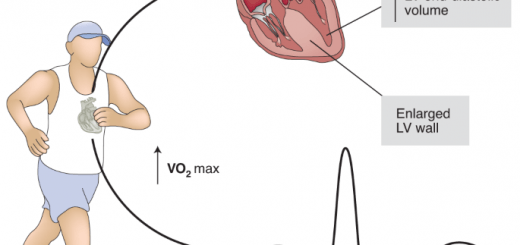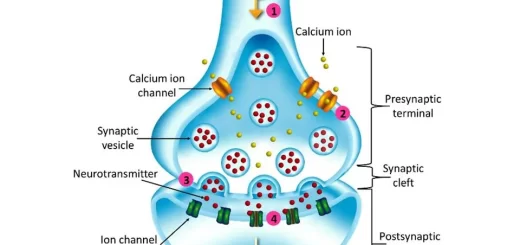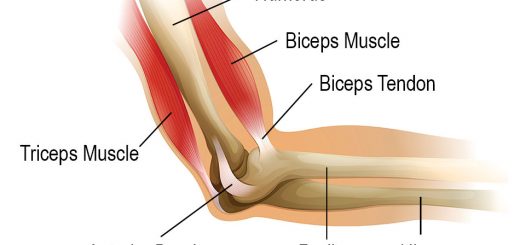Heart & Pericardium structure, Abnormalities and Development of the heart
The heart and its pericardium make up the contents of the middle mediastinum, The left and right phrenic nerves and the pericardiacophrenic vessels lie to the left and right of the pericardium respectively. The pericardium is a fibro-serous sac that encloses the heart & the roots of the great vessels.
The pericardium
The pericardium is formed of two parts:
- Outer fibrous pericardium.
- Inner serous pericardium.
Outer fibrous pericardium
It is conical in shape. Its base lies on and attached to the central tendon of the diaphragm and its apex is directed upwards surrounding the big vessels. Anteriorly, it is attached to the sternum by two Sterno-pericardial ligaments. Posteriorly, it is related to descending aorta and oesophagus. Function it prevents over-distension of the heart.
The inner serous pericardium
It is formed of two layers, which are continuous with each other. The outer parietal layer lines the fibrous pericardium and the inner visceral layer covers the heart. this continuity between the two layers takes place at the points where the major blood vessels enter and leave the heart. Between the two layers is the pericardial cavity, which is a potential space that contains a small amount of fluid that facilitates the movement of the heart.
Sinuses of the serous pericardium
These are recesses in the serous pericardium in relation to the heart and its great vessels.
- Transverse sinus is a recess of the serous pericardium behind the ascending aorta and the pulmonary trunk, and in front of the right and left atria (on each side it is related to the pericardial cavity). The transverse sinus is found by passing your finger from the right side between the superior vena cava (behind) and the ascending aorta (in front) and pushing it to the left.
- Oblique sinus: It is a recess of the serous pericardium behind the base of the heart. This sinus separates the base from two important structures in the posterior mediastinum; oesophagus and descending aorta and bounded on each side by two pulmonary veins.
Development of the heart
Origin: From the mesoderm of the cardiogenic plate at the 3rd week.
Development: It starts by the formation of two heart tubes each has cranial and caudal ends.
- The cranial end is the arterial end which is connected to the dorsal aorta.
- The caudal end is the venous end (embedded in the septum transversum).
- The venous end receives 3 veins for each tube; they are umbilical, vitelline, and common cardinal veins.
- Fusion of the 2 heart tubes occurs.
- This fusion occurred in a cranio-caudal direction and leads to the formation of a single heart tube.
Two constrictions appear in this tube dividing it into three chambers externally, those chambers are bulbus cordis cranially, ventricle caudal to it, and atrium caudal to the ventricle.
- The pericardial cavity lies ventral to the heart tube.
- The heart tube continues to elongate forming a cardiac loop.
- The cardiac loop invaginates the pericardial cavity.
- Hence the heart is covered by two layers of the pericardium: the visceral layer internally and the parietal one externally and in between lies the pericardial cavity.
- The pericardial cavity hangs by the dorsal mesocardium.
- Degeneration of the dorsal mesocardium leads to the formation of transverse sinus of the pericardium.
- The heart tube continues to elongate and bends, so it will attain an S shape. Hence, the arrangement of the chambers of the heart tube after looping will be: the ventricle is caudal to both (bulbus cordis and atrium). This means that the bulbus cordis lies cranial and ventral to the ventricle, while the atrium lies cranial to the ventricle and dorsal to the bulbus.
- New chambers will appear: truncus arteriosus cranial to the bulbus cordis, sinus venosus dorsal to the ventricle and connected to the atrium (five chambers heart).
- The truncus arteriosus and the distal part of bulbus cordis will from the proximal portion of the aorta and pulmonary artery.
- The proximal part of bulbus cordis will form the smooth parts of right and left ventricle (infundibulum of the pulmonary trunk and vestibule of the aorta).
Development of the sinus venosus
The sinus venosus is a large quadrangular cavity, which precedes the atrium on the venous side of the embryonic heart, It receives venous blood from the right and the left horns, Again, each horn receives three veins: umbilical, vitelline, and common cardinal veins.
The sinus is widely connected to the atrium and this orifice is called the Sino-atrial orifice. This orifice has two valves: right and left valves. These two valves fuse cranially forming septum spurium. The venous blood will shift from the left side to the right, so the left horn will decrease in size and the right horn will increase in size.
Fate of sinus venosus
- Right horn: will form the smooth part of the right atrium.
- Transverse part: will form the coronary sinus.
- Left horn: will form the oblique vein of the left atrium.
Fate of sinoatrial valve
It has right and left leaflets,
- Left leaflet of the sinoatrial valve: fuse with septum spurium and is incorporated with it into the interatrial septum.
- Derivatives of the right leaflet of the sinoatrial valve: valve of inferior vena cave, Valve of the coronary sinus, and Crista terminalis.
The crista terminalis forms the line between the rough and the smooth part of the right atrium.
Development of the right atrium
It is formed of the parts:
- Smooth part is formed from the absorption of the right horn of sinus venosus to be a part of the right atrium.
- Rough part (auricle or muscular part), originated from the primitive atrial chamber of the heart tube.
Development of the left atrium
It is formed of two parts:
- Smooth part is formed from absorption of the pulmonary vein to be a part of the left atrium.
- Rough part is originated from the primitive atrial chamber of the heart tube.
Development of cardiac septum
The proliferation of the mesoderm in the atrioventricular and conotruncal regions (in the middle of bulbus cordis) leads to the formation of endocardial cushions.
Development of the interventricular septum
Development of muscular part: Initially there is a single ventricle connected cranially to both bulbus cordis and atrium. A thick muscular ridge develops in the caudal end of the ventricle. This ridge grows cranially forming the muscular part of interventricular septum.
The cranial border of this septum is free having two horns, one of them is connected to the atrioventricular cushion and the other is connected to the bulbar cushion. This muscular part divides the original ventricle into two chambers, which are widely communicated cranially. This communication is through the interventricular foramen.
Development of membranous part: This part is designed to close the interventricular foramen. It is formed by the proliferation of the following:
- Bulbar cushions.
- Atrioventricular cushions.
Development of the interatrial septum
At the end of the 4th week, a sickle-shaped crest appears in the root of the common atrium. This partition called septum primum. The two ends of this septum grow caudally to reach the endocardial cushions. The septum primum has an opening below it; called foramen primum.
Fusion of the septum primum with the endocardial cushions closes this foramen. Cell death starts at the cranial part of the septum primum. This leads to the formation of foramen secundum at the upper part of the septum primum. This connection allows the flow of the blood from the right to the left atrium.
Then a new crescent-shaped septum called septum secundum will appear to the right of the septum primum in an attempt to close the foramen secundum. The lower part of the septum secundum & the upper part of the septum primum will form the foramen ovale.
Right ventricle
The right ventricle is formed of smooth part and rough part
- Smooth part (pulmonary infundibulum): It is formed from the absorbed proximal right part of the bulbus cordis.
- Rough part: It is formed from the right half of the common ventricle.
Left ventricle
The left ventricle is formed of a smooth part and rough part.
- Smooth part (aortic vestibule): It is developed from the absorbed proximal left part of the bulbus cords.
- Rough part: It is developed from the left half of the common ventricle.
Development of aorta and pulmonary trunk
A spiral septum develops in the truncus arteriosus & distal part of bulbus cordis, separating this part into 2 canals, the pulmonary trunk & aorta. This septum fuses with the bulb-ventricular cushions. There is triple relation between the pulmonary trunk and ascending aorta.
Abnormalities
Defect in the septa
- Atrial septal defects (ASD), include: Patent foramen ovale, Foramen secundum defect, Foramen primum defect, Complete absence of the septum (core triloculare biventricular).
- Ventricular septal defects VSD): Defects in the membranous part, Defects in the muscular part, and complete absence of the septum (core triloculare biatriatum).
- Aorticopulmonary window.
Syndromes
- Fallot’s tetralogy: It includes 4 defects in the heart: Over-riding of the aorta, VSD, hypertrophy of the right ventricle & pulmonary stenosis.
- Eisenmenger’s syndrome: It includes pulmonary hypertension with dilatation of pulmonary trunk, which leads to hypertrophy of the right ventricle with the right to left shunt.
Abnormalities in the truncus arteriosus
- Unequal division of the truncus arteriosus (by the spiral septum leads to the dilated aorta and narrow pulmonary trunk or vice versa.
- Persistence of truncus arteriosus meaning that we have a single tube representing the aorta and pulmonary trunk together.
Ectopia cordis
The anterior thoracic wall is absent, thus the heart exposed partially or totally outside the thorax.
Dextrocardia
The apex of the heart lies on the right side. It may be associated with situs inversus.
Abnormalities in the number of chambers
- Cor biloculare (the heart is composed of a single atrium and single ventricle).
- Cor triloculare biatriatum (the heart is composed of two atria and a single ventricle).
- Cor trilocular biventricular (the heart is composed of a single atrium and two ventricles).
Fetal blood and circulation, Changes in fetal circulation after birth (in the newborn)
Heart function, structure, Valves, Borders, Chambers & Surfaces
Thoracic vertebrae structure, function, Chest wall muscles & Intercostal arteries
Anatomy of the cardiovascular system, Thoracic cage function, structure & anatomy
Interventricular septum, Blood supply, valves & Surface anatomy of the heart



